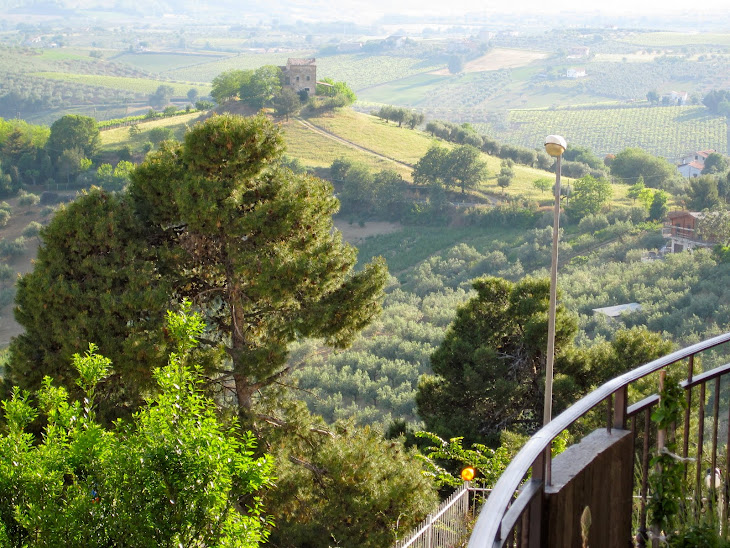28 June 2013
L'Aquila Four Years Later
L'Aquila, the capital of Abruzzo, where I live, experienced a 5.8 earthquake in 2009 . The epicenter was close to this ancient and beautiful city and left 300 dead and 40,000 homeless as well as a devastated city center that remains closed to residents to this day. It's hard to imagine how large and elegant L'Aquila was and the extent of the disaster for residents, students at he university and for the economy of the province. Then Prime Minister Silvio Berlusconi vowed to reconstruct this vital city in six months. Four years later, the only work done is the placement of scaffolding around the buildings.
On a recent visit I marveled at some intact structures or facades while all around was damaged.
There's a heartbreaking photo posted of some of the caskets from a joint funeral.
And handwritten notes left by former patrons on the door of a favorite cafe now closed.
One of the churches had scaffolding on the inside as well and was open to visitors.
It's hard to grasp the enormity of the loss of this capital, this historical and cultural center, this educational and commercial center. It's hard to see it left in this state of abeyance. It has the third largest piazza in Italy as just one of its many piazzas and elegant buildings and villas among its historic places.
Tours are now given to witness the devastation. I could see glimpses into houses, their doors ajar with dishes on the table and photos on the shelves. Residents have not been allowed back. Lives suspended.
There's no shortage of finger pointing to assign blame in the lack of progress in reconstruction. But it's the more personal side of this enormous loss that was evident at every turn. This large and formerly lovely city, the province's capital, with no people. Add this to the strangely elaborate scaffolding and it was eerie and profoundly unsettling.
Subscribe to:
Post Comments (Atom)













Eerie and tragic.
ReplyDeleteSadly so.
DeleteEerie, indeed. As you say, Mary, it can be tempting to pontificate about governmental failure or the inefficiency of bureaucracy, but it really comes down to the human loss. As well as the ongoing loss to all of us of what sounds like an extraordinarily beautiful and unique city. I hope the rebuilding picks up some momentum, but not at the cost of quality and artistic integrity.
ReplyDeleteI wish I had seen it in its heyday rather than in books, or people's accounts, or as it is now.
DeleteHard for me to imagine that FOUR YEARS later residents are not allowed back in their homes. It just boggles my mind.
ReplyDeleteThe entire city center is empty and only two buildings have been renovated- both banks. It's sad.
DeleteSad! And I suppose the troubled world economy doesn't make things easy (oh-oh, here I am making excuses for Berlusconi, ha!).
ReplyDeleteBerlusconi was the PM at the time and there are questions of how all the money donated was managed. The economy is even worse off now, of course.
Deletewow...quite sobering...i am glad there is life in the after....the notes on the window by former patrons was touching....
ReplyDeleteThe other thing that touched me is the commune has taken responsibility to feed the abandoned dogs who now roam the streets. They are friendly to people but bark at any cars that come through.
Delete